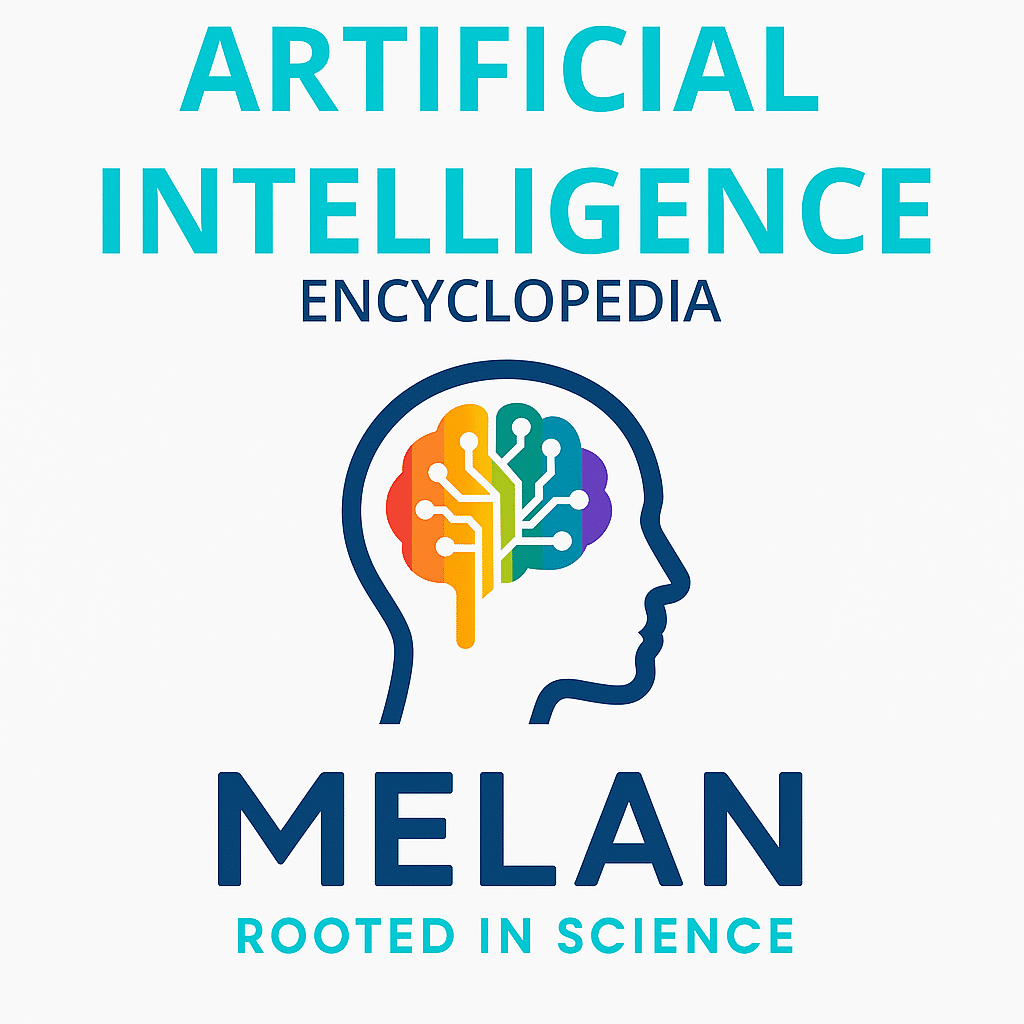Interpolation refers to a mathematical and computational technique that estimates unknown values between known data points by constructing functions or models that pass through or near the existing data. In artificial intelligence and machine learning, interpolation describes how models make predictions within the range of their training data, representing a fundamental concept for understanding model behavior, generalization capabilities, and the difference between learning patterns from seen data versus extrapolating to entirely new scenarios.
Interpolation
|
|
|---|---|
| Category | Mathematics, Machine Learning |
| Subfield | Numerical Analysis, Statistical Modeling, Function Approximation |
| Common Methods | Linear, Polynomial, Spline, Neural Network |
| Key Applications | Image Processing, Time Series, Scientific Computing |
| Related Concepts | Extrapolation, Generalization, Overfitting |
| Sources: Wolfram MathWorld, Nature Machine Learning, IEEE Signal Processing | |
Other Names
Function Approximation, Data Fitting, Value Estimation, Curve Fitting, Surface Fitting, Between-Point Estimation, Smooth Approximation
History and Development
Interpolation has mathematical roots in Babylonian astronomy appearing as early as 2000 BCE as a method for predicting planetary positions between observed measurements. Isaac Newton formalized polynomial interpolation in the 17th century, developing Newton’s divided differences method that remains fundamental today. The 18th and 19th centuries saw contributions from mathematicians like Joseph-Louis Lagrange, who developed Lagrange interpolation, and Carl Friedrich Gauss, who advanced least squares methods.
The field expanded significantly in the 20th century with digital computing, enabling complex smooth approximation methods for scientific and engineering applications. Modern machine learning has transformed value estimation from a purely mathematical tool into a central concept for understanding how AI models generalize, with researchers like Vladimir Vapnik and others connecting interpolation theory to statistical learning theory and the bias-variance tradeoff.
How Interpolation Works
Function approximation operates by constructing mathematical functions that pass through or near a set of known data points, then using these functions to estimate values at intermediate positions. Linear interpolation, the simplest form, connects adjacent points with straight lines and estimates values along these lines. Polynomial interpolation fits higher-degree polynomials through multiple points, creating smooth curves that can capture more complex patterns.
Spline interpolation uses piecewise polynomials that connect smoothly at data points, avoiding the oscillations that can occur with high-degree polynomials. In machine learning, neural networks and other models perform sophisticated value estimation by learning complex, high-dimensional functions that map inputs to outputs based on training examples, enabling predictions on new data that falls within the range of the training distribution.
Variations of Interpolation
Linear and Polynomial Interpolation
Simple methods that connect data points with straight lines or fit polynomial curves through multiple points, commonly used in basic data analysis and scientific computing for smooth value estimation between measurements.
Spline and Piecewise Interpolation
Advanced techniques that use multiple polynomial segments connected smoothly at data points, providing flexible curve fitting that avoids oscillations while maintaining mathematical smoothness across the entire interpolation range.
Machine Learning Interpolation
Complex high-dimensional function approximation performed by neural networks and other AI models that learn intricate patterns from training data to make predictions on new inputs within the training domain’s scope.
Real-World Applications
Interpolation powers image and video processing applications that resize, rotate, or enhance visual content by estimating pixel values at new positions based on surrounding known pixels. Weather forecasting systems use interpolation to estimate atmospheric conditions at locations between weather stations, creating detailed maps and predictions across geographic regions. Medical imaging relies on interpolation to reconstruct high-resolution images from sparse data, improving diagnostic capabilities in CT scans, MRI, and other imaging modalities.
Financial modeling uses function approximation to estimate asset prices, interest rates, and risk measures at points between observed market data, enabling sophisticated trading and risk management strategies. Geographic information systems employ value estimation to create elevation maps, population density estimates, and environmental measurements across continuous surfaces from discrete observation points.
Interpolation Benefits
Interpolation enables the creation of continuous models from discrete data points, allowing analysis and prediction at any point within the data range rather than only at measurement locations. It provides mathematically principled methods for handling missing data and filling gaps in datasets, improving the completeness and utility of information for analysis and decision-making. The technique allows efficient data compression and storage by representing complex curves and surfaces with relatively few control points while maintaining accuracy.
Value estimation methods can preserve important mathematical properties like smoothness and continuity that are essential for physical modeling and scientific applications. In machine learning, understanding interpolation helps distinguish between memorization and genuine pattern learning, guiding the development of models that generalize well to new data.
Risks and Limitations
Overfitting and Runge’s Phenomenon
High-degree polynomial interpolation can create extreme oscillations between data points, particularly near the boundaries of the function approximation range, leading to unrealistic estimates that fit training data perfectly but perform poorly on new data. This phenomenon, known as Runge’s phenomenon, demonstrates how increasing model complexity doesn’t always improve interpolation quality and can actually reduce reliability.
Extrapolation Errors and Domain Limitations
Interpolation methods often fail catastrophically when applied beyond the range of training data, producing wildly inaccurate extrapolations that can mislead users about model capabilities. Machine learning models trained through value estimation may appear to perform well on test data within the training distribution but fail dramatically when encountering genuinely novel scenarios or distribution shifts.
Computational Complexity and Scalability Issues
Advanced value estimation methods require significant computational resources, particularly for high-dimensional data or real-time applications. The curse of dimensionality affects interpolation in machine learning, where the amount of data needed for accurate interpolation grows exponentially with the number of input dimensions, making it challenging to train reliable models for complex, high-dimensional problems.
Quality Assurance and Validation Challenges
Determining the appropriate interpolation method and validating interpolation quality requires domain expertise and careful analysis of the underlying data characteristics and intended applications. Regulatory frameworks in fields like medical imaging and financial modeling increasingly require validation of interpolation methods to ensure safety and accuracy. These challenges stem from legal pressure following errors in critical AI applications that relied on interpolation, market demands for reliable and interpretable AI systems, reputation management after high-profile model failures, and investor concerns about the robustness and generalization capabilities of AI systems.
Standards Development and Professional Guidelines
Scientific communities, engineering organizations, and regulatory bodies work to establish standards for interpolation methods in various domains, while AI researchers and practitioners develop guidelines for distinguishing between interpolation and extrapolation in machine learning applications. Professional societies in fields like medical imaging, geosciences, and finance establish best practices for interpolation validation and quality assurance.
The intended outcomes include improving the reliability and transparency of interpolation-based predictions, establishing clear boundaries between valid function approximation and risky extrapolation, developing robust validation methods for value estimation quality, and ensuring appropriate use of interpolation techniques in critical applications. Initial evidence shows increased focus on interpolation versus extrapolation in AI research, development of better validation methods for spatial and temporal interpolation, growing awareness of interpolation limitations in machine learning, and establishment of domain-specific guidelines for interpolation applications.
Current Debates
Deep Learning as Universal Function Approximation vs. Memorization
Researchers debate whether large neural networks genuinely learn underlying patterns or primarily perform sophisticated function approximation and memorization of training data, with implications for understanding AI capabilities and limitations in novel situations.
Optimal Interpolation Methods for Different Data Types
Scientists and engineers disagree about the best value estimation techniques for various applications, weighing trade-offs between computational efficiency, accuracy, smoothness, and robustness across different types of data and use cases.
Interpolation vs. Extrapolation in AI Safety
AI safety researchers debate how to reliably distinguish between function approximation within training distributions and potentially dangerous extrapolation to new domains, particularly for high-stakes applications like autonomous vehicles and medical diagnosis.
Sparsity and Sampling Theory for Interpolation
Mathematicians and signal processing experts discuss optimal sampling strategies and the minimum data requirements for accurate value estimation, particularly in the context of compressed sensing and sparse data recovery.
Physical Constraints and Prior Knowledge in Smooth Approximation
Domain experts debate how to incorporate physical laws, conservation principles, and prior scientific knowledge into interpolation methods to improve accuracy and ensure physically meaningful results.
Media Depictions of Interpolation
Movies
- Minority Report (2002): The PreCrime system uses predictive function approximation to estimate future criminal behavior based on past patterns, exploring the limits of prediction within known data versus true forecasting
- Avatar (2009): Computer graphics extensively use interpolation techniques to create smooth character animation and realistic visual effects by estimating intermediate frames between key poses
- The Martian (2015): Mark Watney (Matt Damon) uses interpolation-like reasoning to estimate resource needs and survival timelines based on limited data points about his situation
TV Shows
- Numb3rs (2005-2010): Charlie Eppes (David Krumholtz) frequently uses mathematical function approximation and modeling to solve crimes by estimating unknown values from sparse evidence
- Westworld (2016-2022): The show explores how AI systems interpolate between programmed behaviors to create seemingly natural responses, questioning the nature of artificial consciousness
- CSI franchise (2000-2015): Crime scene investigators use interpolation techniques in facial reconstruction, ballistics analysis, and digital evidence enhancement
Books
- Foundation series by Isaac Asimov: Psychohistory uses mathematical value estimation concepts to predict future societal trends based on historical patterns and large-scale human behavior
- The Signal and the Noise (2012) by Nate Silver: Discusses interpolation and extrapolation challenges in prediction and forecasting across various domains from sports to politics
- Weapons of Math Destruction (2016) by Cathy O’Neil: Examines how algorithmic interpolation in predictive models can perpetuate bias and create unfair outcomes in various social applications
Games and Interactive Media
- Civilization series (1991-present): Game mechanics use value estimation to smooth transitions between discrete game states and calculate intermediate values for complex economic and military simulations
- SimCity series (1989-present): Urban simulation uses interpolation to model population growth, traffic flow, and economic development between discrete time steps and spatial locations
- Animation and Graphics Software: Professional tools like Maya, Blender, and Adobe After Effects rely heavily on value estimation for smooth animation, morphing effects, and realistic motion between keyframes
Research Landscape
Current research focuses on developing interpolation methods that work effectively in high-dimensional spaces and with sparse data, addressing challenges posed by the curse of dimensionality in machine learning applications. Scientists are working on physics-informed interpolation that incorporates scientific knowledge and physical constraints to improve accuracy and reliability. Advanced interpolation techniques for temporal data aim to better handle time series forecasting and dynamic system modeling. Emerging research areas include uncertainty quantification in interpolation that provides confidence bounds on estimated values, robust interpolation methods that handle outliers and noise, and interpretable interpolation approaches that provide insights into model behavior and decision-making processes.
Selected Publications
- AI Patents Block Life-Saving Drug Discovery
- What is Artificial Intelligence (AI)?
- 60 ChatGPT Prompts for Writing Ad Copy Fast
- What is Digital Marketing?
- Build a Powerful Content Marketing Strategy for Your Wellness Beauty Brand
- What is a “personal hardship” flag in Google Merchant Center?
- Mycorrhizal symbioses and tree diversity in global forest communities
- What is Schema Markup?
- SEO is Outdated, Optimize Your Website for AI
- Google Personal Hardship Alerts Get It Wrong and Mislabel Products
- New case law and liability risks for manufacturers of medical AI
- Stop Training Google to Steal Your Patients with 3rd-Party Analytics
- Phage display enables machine learning discovery of cancer antigen–specific TCRs
- Discovery of unconventional and nonintuitive self-assembling peptide materials using experiment-driven machine learning
- When Google Misunderstands Your Business and You Rank for Irrelevant Keywords
Frequently Asked Questions
What exactly is interpolation?
Interpolation is a mathematical technique that estimates unknown values between known data points by constructing functions or curves that connect the existing data, commonly used in AI and scientific computing.
How does interpolation relate to machine learning and AI?
Machine learning models perform complex interpolation by learning patterns from training data to make predictions on new inputs that fall within the range of their training examples, distinguishing this from extrapolation to completely new scenarios.
What’s the difference between interpolation and extrapolation?
Interpolation estimates values between known data points where the model has training examples, while extrapolation attempts to predict values outside the range of training data, which is much more challenging and error-prone.
Why is interpolation important for understanding AI limitations?
Understanding interpolation helps distinguish between AI systems that memorize training data versus those that learn generalizable patterns, and highlights the risks of applying AI models to scenarios beyond their training experience.
What are the main challenges with interpolation methods?
Key challenges include overfitting with complex models, computational requirements for high-dimensional data, determining appropriate interpolation methods for different data types, and validating value estimation quality and reliability.


